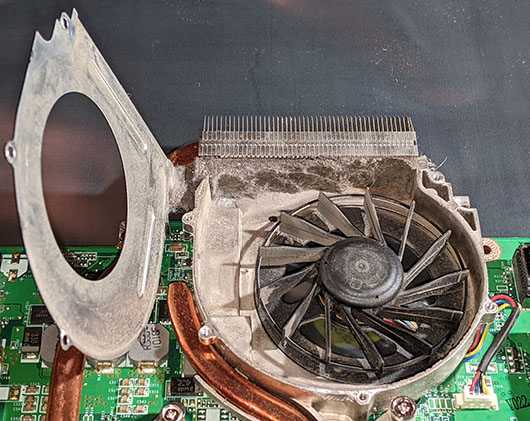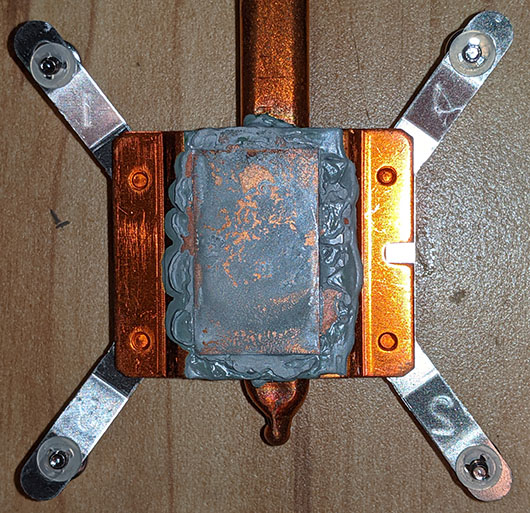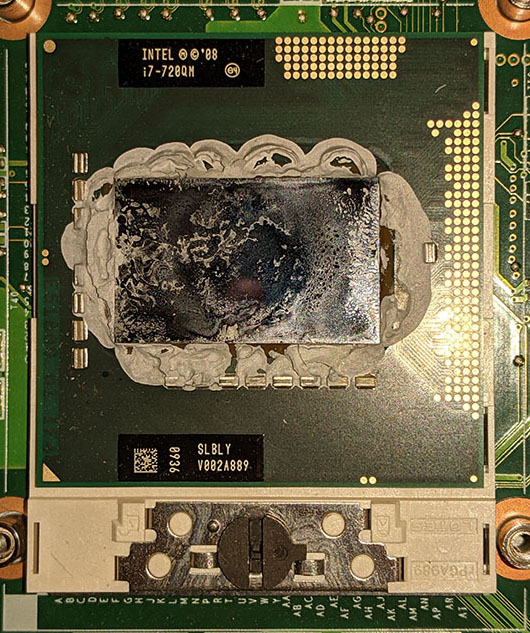Studio 1558 overheating problem in detail
I have previously mentioned in passing, for example here and here, that the Dell Studio 1558 notebook computers are prone to overheating. I figured it was time to go into this in a bit more detail.
As I mentioned in the first post linked above, the configurations of some Studio 1558 computers (particularly ones with discrete graphics and quad-core CPUs) tended to overheat even when fresh from the factory. Dell addressed this with the A04/A05 BIOS which resolved the problem for most customers. However, people are still reporting the issue and selling used 1558 systems with comments like “The unit boots to BIOS, but a few minutes later it shuts off. No further testing has been done.” This is a different problem, caused by a combination of accumulation of lint in the fan and degradation of the heatsink compound over 10 years or so.
The fix is easy, once you get to the fan. Getting there is the hard part. Refer to the service manual (or DCSE if you have it) for detailed disassembly procedures. If you aren’t comfortable disassembling the system to that extent, most repair shops that fix laptop computers should be able to do this for you. I also offer this service, although I probably won’t be cost-effective for you unless you are having other services performed at the same time.
This picture shows the accumulation of lint that has built up over 10 years of use. The air exhaust through the cooling fins is completely blocked. The heatsink assembly was removed from the motherboard and the lint was carefully vacuumed out. Then the fan was removed and the whole heatsink assembly was put through an ultrasonic cleaner to remove any remaining lint. A new replacement fan was then installed.
Here you can see the hardened heatsink compound. It had hardened to the extent that there was almost no thermal conduction between the top of the CPU and the heatsink assembly. After carefully chipping away the larger chunks of material, the assembly was left to soak in solvent to remove the remaining compound. At the same time, the old thermal pads were removed from the part of the heatsink assembly that cools the HD5470 graphics chip and the 2 lower video RAM chips. The surfaces of the graphics and RAM chips were cleaned to remove the oils that had separated out of the old thermal pads.
The existing CPU chip (an i7-720QM) also had a large amount of hardened thermal compound on it. As this repair order also involved upgrading the CPU to an i7-740QM, no cleaning was done on this chip.
After installing the new CPU chip, all surfaces were cleaned with 2-part Arctic Silver cleaner / prep fluid. New thermal pads were cut from Arctic Silver thermal pad material (1mm for the 2 video RAM chips, .5mm for the graphics chip) and Arctic Silver heatsink compound was used on the CPU. After reassembly, the processor idle temperature is in the 49-51° C range and with intense CPU usage, reaches 76° C. The system has run under heavy load for more than 24 hours with no faults.



